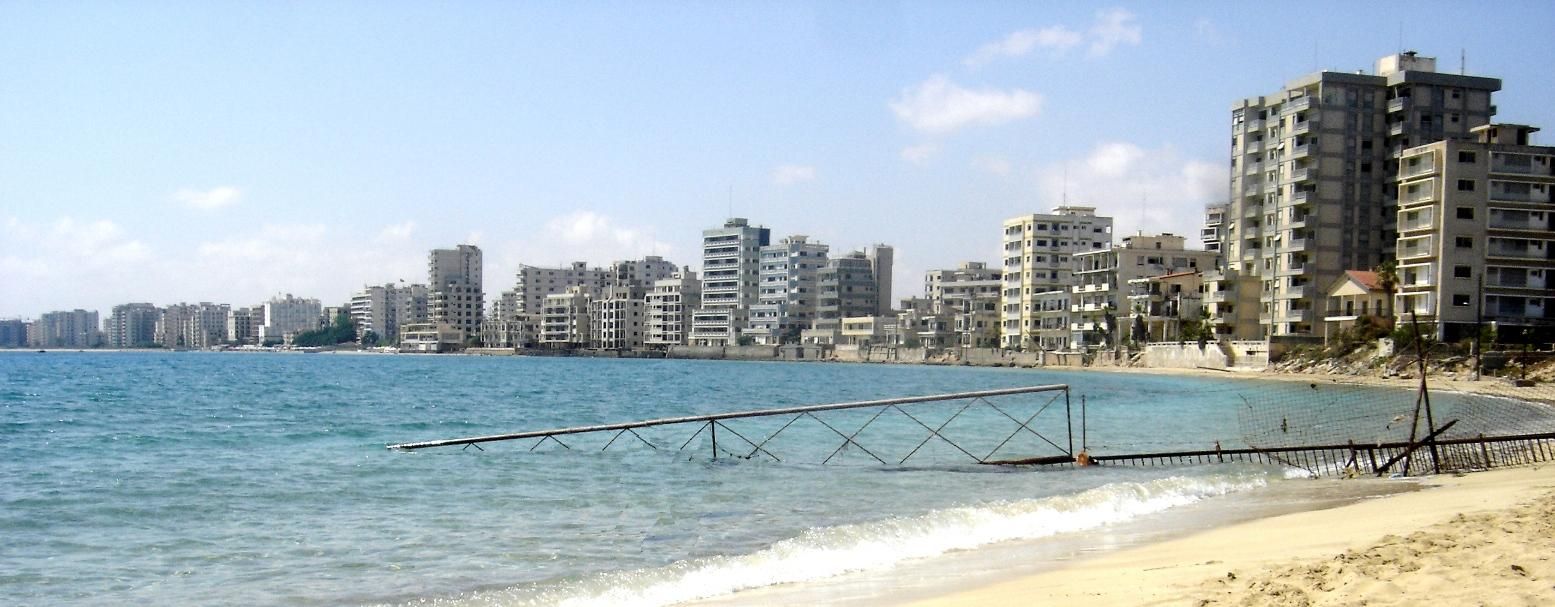Famagusta District
History
Famagusta is a city in Cyprus and is located in the eastern part of the island, in the bay that bears its name. Ancient Famagusta was named Salamina. Later it was renamed Arsinoe and Constantia.
It was especially developed after Cyprus was declared an independent state (1960), so the city became a big shopping center but it became internationally known as an important tourist resort. Among the extensive orange groves that surrounded the city and beside its sandy beach, modern hotels were erected, and Famagusta had a very cosmopolitan appearance. Her Greek Cypriot residents were expelled in 1974 by the Turkish army.
Famagusta district is one of the six provinces of Cyprus. It borders Northwest with the province of Kyrenia, west with the Nicosia province and southwest with the province of Larnaca. The capital of the province is Famagusta. Most of the province is located in the Turkish occupied part of the island.
The largest municipalities of the Famagusta district are the following:
- Municipality of Famagusta
- Municipality of Paralimni
- Municipality of Ayia Napa
- Municipality of Deryneia
- Municipality of Sotiras
Ayia Napa is the most popular place in Cyprus. It attracts many tourists from all over the world, mostly at summer. It is an amazing place with picturesque beaches and has an extraordinary nightlife.
History
According to local legend, the now renowned original icon was accidentally discovered by a hunter in pursuit of his prey. Upon discovery, the icon of the Virgin Mary was called Virgin Mary of Napa, eventually shortened and now known as Ayia Napa. The present monastery, built in 1500, was built around the cave, in honor of the Virgin Mary of Ayia Napa. According to local tradition, until 1790 no one lived within close vicinity of Ayia Napa. The first inhabitants who actually appeared and settled were twenty men from Salonica, Greece.
Chronology
AD (Anno Domini – The year of our Lord)
1366 AD: Agia Napa is mentioned for the first time by Leontios Mahaeras. After the Turkish occupation (1570 AD): the monastery of Agia Napa it was converted to a men's monastery and continued to flourish as such for almost a hundred years until 1758 when, for reasons unknown, it ceased to be occupied by permanent monks.
16th century AD: Agia Napa was mentioned again, by Venetian documents and maps. The monastery and the village took their name from the ancient Greek word "Nape", which means "wooded valley". The monastery of Agia Napa flourished during the 16th century and continued to hold a position of importance up until the end of the Venetian occupation of Cyprus.
1790 AD: The area around the monastery of Agia Napa was not inhabited. The first inhabitants of Agia Napa were a young couple from Panagia village.
1975 – 1985 AD: In this decade, Ayia Napa started to grow up as a tourist attraction and turn up to be the most desire place for holidays in Cyprus.
1990 AD: The new church was built southwest of the monastery. Its interior walls are covered with beautiful Byzantine-style icons, were completed in August of 1994.
Geography
Geographically, Ayia Napa lies near Cape Greco at the eastern part of Cyprus, just south of Famagusta and forms part of a larger area known as Kokkinochoria (a name derived from the red color of its soil). It is a town of Famagusta District, in the remaining southern part of the district not occupied by Turkish forces in 1974. Ayia Napa is about 8 kilometers (5.0 mi) from Protaras, a town that has recently seen similar development, but still manages to remain low-key and remains more favorable for families and Cypriot locals.
Protaras is mainly a tourist resort that belongs to the administrative jurisdiction of the Municipality of Paralimni in Cyprus. It is famous for its crystal clear waters and white sand.
History: Protaras in ancient times was called "Leukolla", but there is no more evidence to describe it at that time.
Beaches: The golden beaches and the blue crystal, clear waters are the main features of its beaches. Protaras is exclusively a tourist area full of tranquility since it is the best place to relax on your vacation.
Development: Protaras is located between Paralimni and Ayia Napa and is a newly built area with many bars, restaurants and hotels. The first hotels and tourist apartments started around 1977 and continued to grow, with many private villas and rental companies.
Paralimni is the largest community of the rich plain of the Famagusta District and is located at the southeastern edge of Cyprus, where one can enjoy the first sunrise in the whole of Europe.
History: Due to the location of the village, the name "Despite the lake" was adopted, which was modified and became neutral with the use of the village and thus the village was named Paralimni.
Beaches: A typical example of the area is the coastal area that extends along the eastern coast and today we call it "windmill valley".
Development: Paralimni is today a small, progressive town that combines the advantages of the traditional village and the comforts of the modern city. Modern shops, centers and offices next to traditional cafes and old shops. The central square with the cafes has its characteristic features of the old big village. The adjoining streets, new squares and park have the characteristics of modern city with beautiful shop windows and modern shops. There is an air of pleasure and social prosperity.

 English
English
 Ελληνικά
Ελληνικά Русский
Русский